Roederer Cristal Rose, 2012
$499 Original price was: $499.$400Current price is: $400.
Cristal Rosé Champagne
Elevate your celebrations with Cristal Rosé Champagne. This luxurious French sparkling wine from Louis Roederer blends delicate strawberry, citrus, and floral notes with a refined, creamy texture. At 12% ABV, its vibrant, elegant finish makes it ideal for special occasions or pairing with gourmet dishes.
Cristal Rose Champagne: Your Guide to the Pinnacle of Pink Bubbly
If you’ve ever wondered what represents the absolute peak of luxury in the world of sparkling wine, you’ve likely heard the name Cristal. Within this rarefied category, Cristal Rosé Champagne stands as one of the most sought-after and celebrated wines globally. This comprehensive guide will walk you through everything you need to know about this legendary champagne—from its fascinating royal history to its distinctive taste profile and why it commands such extraordinary admiration and prices.
What is Cristal Rosé Champagne?
Let’s start with the fundamentals. Cristal Rosé Champagne is the prestigious rosé expression from Louis Roederer, one of Champagne’s most revered houses. The wine represents the pinnacle of their craftsmanship and is part of the broader Cristal range, which has been synonymous with luxury and excellence since the 19th century.
What makes Cristal Rosé particularly special is its production method and composition. Unlike many rosé champagnes that are made by simply blending white and red wines, Cristal Rosé incorporates about 15-20% of still Pinot Noir wine from their best vineyards into the base wine. This saignée method, where the wine gets its color from skin contact rather than blending, creates greater complexity and aging potential.
The Roederer Cristal legacy began in 1876 when Tsar Alexander II of Russia requested a special champagne from the house. He wanted something exceptional in a clear bottle (so he could see any potential explosives), which led to the creation of the distinctive transparent bottle that remains iconic today.

The Making of Cristal Rosé: Understanding the Craftsmanship
To appreciate why Cristal Rosé Champagne commands such respect, it helps to understand the extraordinary effort behind each bottle:
Vineyard Selection and Management
Cristal Rosé is produced only from Grand Cru vineyards owned by Louis Roederer:
-
Pinot Noir Dominance: Approximately 55% Pinot Noir, 45% Chardonnay
-
Specific Plots: Vineyards in Aÿ, Beaumont-sur-Vesle, and other top sites
-
Biodynamic Practices: Increasing use of organic and biodynamic methods
-
Low Yields: Strict control to ensure maximum quality and concentration
The Production Process
What sets Cristal Rosé apart is its meticulous creation:
-
Extended Aging: Aged 6-8 years on lees versus the legal minimum of 15 months
-
Minimal Dosage: Low sugar addition to preserve purity and freshness
-
Selection Rigor: Only the best barrels from the best vintages are used
-
Time-Intensive: Each bottle represents years of careful development
Tasting Notes: The Flavor Profile of Cristal Rosé Champagne
The moment of truth—what does this legendary champagne actually taste like? The experience of tasting Cristal Rosé Champagne is often described as transformative by wine enthusiasts.
The Visual Experience
Before you even taste it, Cristal Rosé presents beautifully:
-
Color: Delicate salmon-pink with copper reflections
-
Bubbles: Extremely fine, persistent bead
-
Viscosity: Noticeable legs indicating richness
The Aroma (The “Nose”)
The aromatic profile is complex and evolving:
-
Red Fruits: Wild strawberry, raspberry, cherry
-
Citrus Notes: Blood orange, grapefruit zest
-
Floral Elements: Rose petal, peony, iris
-
Mineral Undertones: Chalk, wet stone, subtle smokiness
-
Development: Brioche, almond, with air exposure
The Flavor (The “Palate”)
The tasting experience justifies the reputation:
-
Initial Impact: Remarkable precision and clarity
-
Fruit Character: Red berries with citrus brightness
-
Texture: Silky yet structured, creamy bubbles
-
Complexity: Layers of flavor that unfold gradually
-
Balance: Perfect harmony between fruit, acidity, and minerality
The Finish (The “Aftertaste”)
The conclusion is memorably long:
-
Extended Length: Flavors linger for minutes
-
Clean Finish: Despite richness, finishes fresh
-
Evolution: Continues to develop even after swallowing
Tasting Tip: To fully appreciate Cristal Rosé Champagne, serve it between 10-12°C (50-54°F) in a proper champagne flute or tulip glass. Pour gently to preserve the delicate bubbles and taste it both immediately after pouring and after 10-15 minutes of aeration. The wine’s complexity continues to unfold in the glass, revealing different dimensions over time.
Cristal Rosé Champagne Price: Understanding the Investment
Let’s address the question on everyone’s mind: what accounts for the price of Cristal and specifically Cristal Rosé?
Current Market Pricing
The price of Cristal Rosé typically falls in these ranges:
-
Recent Vintages (750ml): $350-500
-
Older Vintages: $500-1,000+ depending on age and condition
-
Large Formats: Magnums (1.5L) often $700-1,200+
-
Secondary Market: Can exceed these ranges for rare vintages
Factors Influencing the Price of Cristal
Several elements justify the premium Cristal wineprice:
Production Costs:
-
Exceptional vineyard sites and farming practices
-
Extended aging period (tying up capital for years)
-
Rigorous selection process (significant waste of lesser lots)
Brand Prestige:
-
Historical significance and royal provenance
-
Consistent critical acclaim and high ratings
-
Cultural status and celebrity associations
Market Dynamics:
-
Limited production quantities
-
Global demand exceeding supply
-
Collector and investor interest
The Cristal Family: Understanding the Range
While Cristal Rosé is our focus, it helps to understand its place in the broader Cristal family:
Cristal Brut
The original expression that started it all:
-
Blend: 60% Pinot Noir, 40% Chardonnay
-
Style: Powerful yet refined with incredible aging potential
-
Price: Typically $250-350
Cristal Rosé
The subject of our guide:
-
Blend: 55% Pinot Noir, 45% Chardonnay
-
Style: More expressive fruit with structural power
-
Aging: Slightly longer average aging than the Brut
Vintage Variations
Both Cristal Brut and Rosé are vintage-dated, meaning:
-
Produced only in exceptional years
-
Each vintage has its own character
-
Aging potential varies by vintage characteristics
Why Choose Cristal Rosé Champagne?
Several compelling reasons make this champagne worth its premium positioning:
For Special Occasions
-
Unforgettable Celebrations: Makes milestones truly memorable
-
Impressive Presentation: Instantly recognizable and respected
-
Shared Experience: Creates lasting memories with loved ones
For Wine Enthusiasts
-
Benchmark Quality: Represents the peak of rosé champagne craft
-
Educational Value: Understanding what’s possible in champagne
-
Aging Potential: Can develop for decades in proper storage
For Collectors and Investors
-
Liquid Asset: Maintains value and often appreciates
-
Prestige Addition: Enhances any serious collection
-
Historical Significance: Part of champagne history
How to Serve and Enjoy Cristal Rosé Champagne
This exquisite champagne deserves proper treatment to showcase its qualities:
Optimal Serving Conditions
Temperature Management:
-
Ideal Range: 10-12°C (50-54°F)
-
Chilling Time: 2-3 hours in refrigerator
-
Avoid: Over-chilling, which masks aromas and flavors
Glassware Selection:
-
Traditional Flute: Preserves bubbles but limits aroma development
-
Tulip Glass: Ideal compromise for bubbles and aromas
-
White Wine Glass: Increasingly popular for premium champagne
Food Pairings
Cristal Rosé Champagne shines with various cuisines:
-
Fine Seafood: Lobster, scallops, caviar
-
Poultry and Game: Roasted chicken, duck, squab
-
Asian Cuisine: Sushi, particularly fatty tuna and uni
-
Fruit-Based Desserts: Berry compositions, peach melba
The Investment Perspective: Cristal Rosé as an Asset
Beyond immediate enjoyment, Cristal Rosé represents a serious consideration for collectors:
Aging Potential
The structure of Cristal Rosé allows for exceptional development:
-
Short-term: 5-10 years from release
-
Medium-term: 10-20 years for developed complexity
-
Long-term: 20+ years for profound tertiary characteristics
Market Performance
Historical data shows:
-
Consistent appreciation for well-stored bottles
-
Particularly strong performance for older vintages
-
Limited edition releases often increase in value rapidly
Finding and Purchasing Cristal Rosé Champagne
As a luxury product with limited production, finding Cristal Rosé requires some strategy:
Authorized Retailers
Wine Specialty Stores:
-
Best for current releases and proper storage
-
Knowledgeable staff can provide vintage guidance
-
Often can source specific vintages
Auction Houses:
-
Excellent for older vintages and large formats
-
Competitive pricing but buyer premiums apply
-
Essential to verify storage conditions
Online Platforms:
-
Convenient price comparison
-
Wide selection from various sellers
-
Important to verify seller reputation
Smart Buying Tips
-
Research Vintages: Some years are particularly celebrated
-
Check Provenance: Storage conditions dramatically affect quality
-
Compare Prices: Significant variation exists between retailers
-
Consider Timing: Prices often rise before holidays and celebrations
For authoritative information about vintages and production, the official Comité Champagne website provides excellent resources about champagne production and vintages.
Cristal Rosé Champagne Review: The Final Verdict
After examining all aspects of this exceptional champagne, here’s the essential assessment:
The Bottom Line: Cristal Rosé Champagne justifies its legendary status through uncompromising quality, remarkable complexity, and extraordinary aging potential. While the price places it in the luxury category, the experience delivers on the promise of something truly special and memorable.
Who Should Invest in Cristal Rosé:
-
Champagne enthusiasts seeking the pinnacle of quality
-
Collectors building a serious champagne portfolio
-
Those celebrating once-in-a-lifetime milestones
-
Anyone wanting to experience what’s possible in rosé champagne
Might Disappoint Those Seeking:
-
Everyday drinking champagne
-
Budget-conscious sparkling wine
-
Immediately accessible fruit-forward styles
-
High dosage (sweet) champagne profiles
Cristal Rosé Champagne represents more than just a beverage—it’s an experience that embodies centuries of champagne-making tradition refined to its absolute peak. For those special moments that deserve nothing but the best, it remains a compelling choice.
Frequently Asked Questions (FAQ)
1. Why is Cristal Rosé Champagne so expensive?
The high price of Cristal reflects several factors: production from only Grand Cru vineyards, extended aging (6-8 years versus 15-month minimum), extremely low production quantities, rigorous selection process, and the brand’s historical prestige and consistent demand from collectors and enthusiasts worldwide.
2. How long can I age Cristal Rosé Champagne?
Cristal Rosé has exceptional aging potential. Most vintages will improve for 10-20 years from release, with the best vintages capable of developing for 30+ years in proper cellar conditions. The wine’s high acidity and structural integrity allow for slow, graceful evolution.
3. What’s the difference between Cristal Brut and Cristal Rosé?
While both share the Cristal house style of precision and elegance, the Rosé incorporates about 15-20% still Pinot Noir wine, giving it more pronounced red fruit characteristics, slightly more body, and often even greater aging potential. The Brut showcases more citrus and mineral notes.
4. Is Cristal Rosé worth the price compared to other prestige cuvées?
This depends on personal preference, but Cristal Rosé consistently ranks among the world’s finest champagnes. Its unique combination of power and precision, along with exceptional aging potential, makes it a benchmark in its category. Many connoisseurs consider it worth the premium for special occasions.
5. What’s the best vintage of Cristal Rosé?
Recent outstanding vintages include 2012, 2008, 2006, and 2002, though excellence varies by personal taste. Older legendary vintages like 1996, 1990, and 1985 are highly sought by collectors. Each vintage expresses itself differently, making exploration part of the enjoyment.
Be the first to review “Roederer Cristal Rose, 2012” Cancel reply
Related products
Champagne
Champagne
Champagne
Champagne
Champagne
Champagne

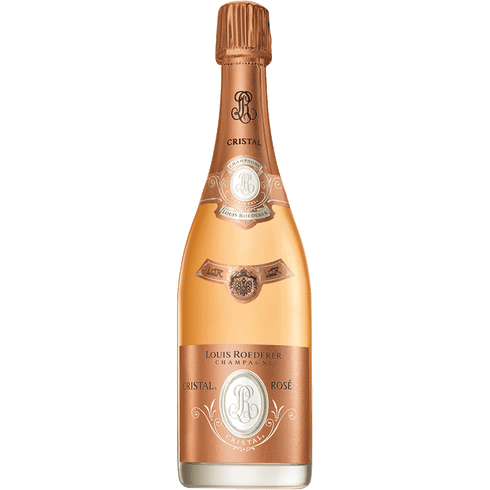
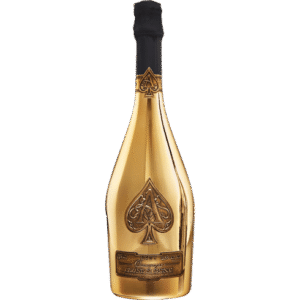
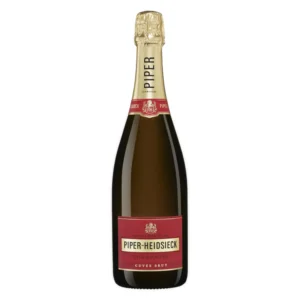
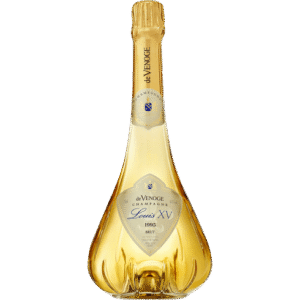
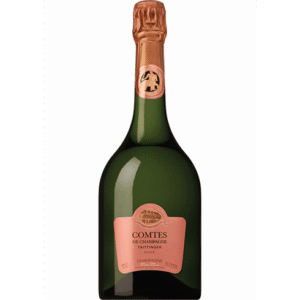

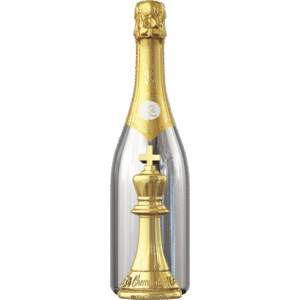

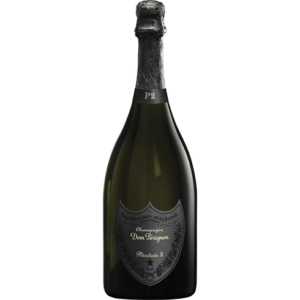
Reviews
There are no reviews yet.